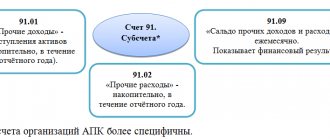Features of the service sector
The service sector is the production and sale of intangible goods. Consumers here can be a variety of entities - not only “ordinary” individuals, but also organizations, individual entrepreneurs or government agencies.
A service is any result obtained from the interaction between a supplier and a consumer. This could be, for example:
- Training is an educational service.
- Transmission of useful information is a consulting service.
- Treatment or prevention of diseases is a medical service.
- Providing the right to use property – rental service.
- Delivery of passengers or cargo is a transport service.
Services have important features that distinguish them from goods:
- Intangibility - check by touch.
- Individual character - the service is provided to a specific consumer or a specific group of consumers.
- Impossibility of storage and transportation - the service cannot be stored or transported.
- Strict relationship between production and consumption of services in time and space.
When maintaining accounting records, you need to take into account the features of the service sector as a type of business:
- A request for a service always occurs before its production.
- There is an inextricable link between demand and consumption of services.
- The service cannot be resold.
GLAVBUKH-INFO
This cost item conventionally combines and considers the following expenses for payment for services of third-party organizations directly related to the production and sale of products or the management needs of the organization:- expenses for information and legal services;
- expenses for consulting and other similar services;
- expenses for audit services;
- expenses for purchasing services for managing an organization or its individual divisions;
- expenses for services for the provision of workers (technical and managerial personnel) by third-party organizations to participate in the production process, production management or to perform other functions related to production and/or sales;
- expenses for accounting services provided by third parties.
Information services include the provision of economic, technical, social, legal and other information on orders from individual organizations, as well as in the form of publications available for free sale.
The main function of these services is the provision and dissemination of business information, facilitating the formation of a business information space.
Legal services cover a significant amount of legal services provided on a commercial basis.
Legal services include, in particular, legal advice in all areas of law; legal work to ensure economic and other activities of organizations; representation in judicial and other bodies; legal examination of constituent and other documents of legal entities; drawing up statements, agreements, claims, agreements, contracts, claims and other documents of a legal nature; selection and systematization of regulations, compilation of reference books on legal issues, etc.
Consulting services include the provision of services including general management consulting, administrative management consulting, financial management consulting of the organization, etc.
Organizations - accounting consultants can also advise organizations on accounting procedures and technology (software), the use of accounting information to control the financial issues of organizations, calculations for the preparation of annual reports for shareholders, external auditors, tax authorities, etc.
Audit services provide for an independent verification of an organization's financial statements with the issuance of an opinion regarding its correctness, reliability and compliance with generally accepted standards.
The purpose of the audit is to express an opinion on the reliability of the accounting (financial) statements of the organization and the compliance of the accounting procedures with the legislation of the Russian Federation.
From January 1, 2009, the procedure for classifying services as audit services related to verifying the reliability of accounting (financial) statements was established by Federal Law No. 307-FE dated December 30, 2008 “On Auditing Activities”.
According to the Federal Law of November 21, 1996 No. 129-FZ “On Accounting,” if an organization is subject to a mandatory audit, then simultaneously with the balance sheet it must submit an auditor’s report confirming the reliability of the organization’s accounting (financial) statements.
In accordance with the Federal Law “On Auditing”, a mandatory audit is carried out in cases where:
- the organization has the organizational and legal form of an open joint-stock company;
- the volume of revenue from the sale of products (performance of work, provision of services) of the organization (with the exception of agricultural cooperatives and unions of these cooperatives) for the year preceding the reporting year exceeds 50 million rubles. or the amount of assets on the balance sheet as of the end of the year preceding the reporting year exceeds 20 million rubles.
For municipal unitary enterprises, by law of a constituent entity of the Russian Federation, these financial indicators can be reduced;
- in other cases established by federal laws.
Mandatory audit is carried out annually.
An audit report is an official document intended for users of the accounting (financial) statements of the audited entities, containing the opinion of the audit organization on the reliability of the accounting (financial) statements of the audited entity, expressed in the prescribed form.
The procedure for payment and the amount of monetary remuneration to audit organizations for conducting audits (including mandatory audits) are determined by contracts for the provision of audit services and cannot be made dependent on the fulfillment of any requirements of the audited entities regarding the content of conclusions that can be drawn as a result of the audit. .
Services for managing an organization or its individual divisions provide services for analyzing specific management problems, issuing recommendations for a specific organization and providing assistance in their implementation.
Accounting services are services provided by specialized accounting firms for the organization, maintenance, restoration or improvement of accounting records.
According to Federal Law No. 129-FZ, heads of organizations can, depending on the volume of accounting work, transfer accounting management to a specialized organization on a contractual basis.
Expenses associated with payment for services of third-party organizations are reflected in the debit of account 26 “General business expenses” in correspondence with the credit of account 60 “Settlements with suppliers and contractors” or account 76 “Settlements with various debtors and creditors”. Subsequently, these expenses are written off to accounts for the sale of products (works, services) for the main activity. The write-off of these expenses is reflected in the debit of account 90 “Sales” (subaccount 90–2 “Cost of sales”) in correspondence with the credit of account 26 “General business expenses”.
In accordance with the Tax Code of the Russian Federation, VAT amounts presented by suppliers of the above services are subject to deduction on the basis of invoices after these services are accepted for accounting.
In accounting, expenses associated with payment, for example, for legal services, can be reflected in the following entries.
No.
| Contents of business transactions | Corresponding accounts | ||
| Debit | Credit | ||
| 1 | Costs associated with the provision of legal services are reflected (excluding VAT) | 26 | 60 |
| 2 | The amount of VAT claimed by the legal services provider is reflected | 19 | 60 |
| 3 | Reflected payment of legal services (including VAT) | 60 | 51 |
| 4 | The amount of VAT paid on legal services provided was submitted for deduction. | 68-1 | 19 |
| 5 | Expenses related to the provision of legal services are written off to cost of sales (written off at the end of the reporting period as part of similar expenses) | 90-2 | 26 |
Expenses associated with the provision of consulting, information, audit and other similar services by third parties are reflected in a similar manner.
Documents confirming expenses for these services are contracts with third-party organizations, acceptance certificates for services provided, invoices, bank statements on current accounts and payment orders.
In accounting, in the manner discussed above, expenses for the services of third-party organizations are reflected that are directly related to the ordinary activities of the organization, that is, related directly to the production and sale of products (works, services) or to the management needs of the organization.
In cases where the services of third-party organizations are not directly related to the normal activities of the organization, they are accounted for in a different manner.
For example, if consulting and information services provided by third parties are directly related to the acquisition of fixed assets, intangible assets or inventories, then for accounting purposes the cost of these services should be included in the actual costs of acquiring these assets.
| < Previous | Next > |
What documents are used to document the provision of services?
When preparing accounting documents in the service sector, it is necessary to determine their list, which depends on the specific situation. In general, such documents can be divided into two groups:
- General ones that need to be completed regardless of what types of services the provider provides:
- agreement;
- an invoice for payment;
- the act of providing services;
- payment documents - checks, receipts, payment orders.
- Particulars, which make up in individual cases, for example:
— waybills and waybills when transporting goods;
— design and estimate documentation for the provision of repair and installation services.
If the type of service does not require a mandatory written form of the transaction, then theoretically the contract does not need to be signed. The transaction will be considered concluded after the customer pays the invoice, which reflects the type of service and the conditions for its provision.
But it is better, even for one-time services, to draw up all the “basic” documents: agreement, invoice and deed. This will help avoid disputes both with counterparties and with tax authorities in the event of an audit.
Civil relations
Information disseminated in any way, in any form and using any means, addressed to an indefinite circle of persons and aimed at attracting attention to the object of advertising, creating or maintaining interest in it and its promotion on the market, is advertising (Clause 1, Article 3 of the Federal Law of March 13, 2006 N 38-FZ “On Advertising”).
In this case, the contractor, by placing short advertisements and a link to the organization’s website, attracts the attention of visitors to third-party websites to it. Thus, the services provided by the contractor are advertising.
Accounting for services provided by the contractor
If the consumer of the service is a legal entity or individual entrepreneur, then income is reflected in correspondence with account 62 “Settlements with buyers and customers”. If a businessman provides services to the public, then the correspondence will be with account 50 for cash payments, or account 51 for payments by card.
DT 62 (50, 51) - CT 90.1 - service provided
DT 50 (51) – CT 62 – consumer (legal entity or individual entrepreneur) paid for the service through a cash desk or bank
DT 90.3 - CT 68.2 - VAT is charged on the service provided (if the general tax system is applied)
Not only is the service itself intangible, but often no material costs are required to perform it. Example – activities of auditors, legal consultants, etc. In this case, the main costs are employee salaries and contributions (accounts 70, 69), as well as services of third-party organizations, for example, rent (accounts 60, 76). In this case, all costs are immediately taken into account on account 20 “Main production”.
DT 20 - CT 70 (69, 60, 76...) - cost accounting
DT 90.2 – KT 20 – write-off of costs for the cost of services provided after the month
If the contractor provides services and uses the customer’s materials, then it is considered that the contractor does not incur material costs. In this case, to account for inventory items received from the customer, you need to use off-balance sheet account 003 “Materials transferred for processing.”
If the performer uses the services of third-party companies or individuals, then he cannot “resell” them, since the service is used at the time of receipt. When purchasing an “incoming” service, the contractor attributes the costs for it directly to cost accounts, or to an increase in the cost of inventory items. You need to take into account the costs immediately upon receiving it, since this is physically impossible.
But there is also a situation when, in order to provide services, the contractor will need to organize production. For example, advertising may require flyers, posters, banners, etc.
In this case, it is necessary to keep production records using accounts 25 “General production expenses”, 26 “General expenses” and, if necessary, 23 “Auxiliary production”.
DT 20 (23, 25, 26) - CT 10 (60, 69, 70) - costs are collected in different accounts depending on whether they can be directly attributed to finished products
DT 20 – CT 25 (26) – distribution of overhead costs, for example – in proportion to material costs
DT 43 - KT 20 (23) - formation of the cost of finished products
DT 90.2 - CT 43 (26) - write-off of cost and general business expenses during sales
Work in progress in the service sector is usually absent or minimal, since most are for a short time, and the output is directly related to their provision.
Postings for services received from third parties
Let us consider in more detail how to attribute the services of third-party organizations in transactions using the example of receiving various types of services.
Example 1. Receipt of communication services
Expenses for communication services are reflected in accounting in accordance with paragraph 18 of PBU 10/99 “Expenses of the Organization”; in tax accounting they are reflected in accordance with subparagraph 25 of paragraph 1 of Article 264 of the Tax Code of the Russian Federation.
Let’s say the supplier Svyaz LLC provides communication services to Vesna LLC. According to the contract, the cost of communication services per month is 14,750 rubles, incl. VAT 18% - 2,250 rub. Costs for services are included in the organization's expenses.
The accountant of Vesna LLC reflected the receipt of communication services from the supplier with the following entries:
| Debit Account | Credit Account | Transaction amount, rub. | Wiring Description | A document base |
| 26 | 60.01 | 12 500 | The cost of communication services in the current month is taken into account | Certificate of services rendered, Invoice received |
| 19.04 | 60.01 | 2 250 | VAT amount included | |
| 68.02 | 19.04 | 2 250 | The VAT amount is accepted for deduction | |
| 60.01 | 51 | 14 750 | Payment to the counterparty for services rendered | Bank statement |
Example 2. Purchasing pre-sales services
Expenses for pre-sale preparation are reflected in accounting in accordance with paragraph 6 of Article 226 of the Methodological Instructions, and in tax accounting are reflected in accordance with Article 265 of the Tax Code of the Russian Federation.
Let’s assume that Vesna LLC transferred its goods in the amount of 250 pieces to the counterparty for polishing. The cost of the pre-sale preparation service under the contract is 61,950 rubles, incl. VAT 18% - RUB 9,450. According to the accounting policy, service costs are classified as indirect costs.
The accountant of Vesna LLC reflected the services provided for pre-sale preparation of goods with the following entries:
| Debit Account | Credit Account | Transaction amount, rub. | Wiring Description | A document base |
| 44.01 | 60.01 | 52 500 | The cost of services provided is taken into account | Certificate of services rendered, Invoice received |
| 19.04 | 60.01 | 9 450 | VAT amount included | |
| 68.02 | 19.04 | 9 450 | The VAT amount is accepted for deduction | |
| 90.07.1 | 44.01 | 52 500 | Distribution costs are written off as financial results | Help-calculation of write-off of indirect expenses |
Example 3. Receipt of cash register maintenance services
For example, Vesna LLC purchased a cash register machine (CCM) worth RUB 10,207, incl. VAT 18% - RUB 1,557. For commissioning work, 1,062 rubles were paid, incl. VAT 18% - 162 rubles. An agreement was concluded with the KKM Technical Service Center for monthly KKM maintenance, the cost of the service is 295 rubles, incl. VAT 18% - 45 rub.
Under the conditions of the example, maintenance costs are included in the organization's expenses. The accountant of Vesna LLC reflected cash register servicing services with the following entries:
| Debit Account | Credit Account | Transaction amount, rub. | Wiring Description | A document base |
| 44.01 | 60 | 250 | The amount of expenses for KKM maintenance is taken into account | Certificate of services rendered, Invoice received |
| 19.04 | 60 | 45 | VAT amount included | |
| 68.02 | 19.04 | 45 | The VAT amount is accepted for deduction |
Accounting for services provided by the customer
Customers – legal entities or individual entrepreneurs – reflect “incoming” services using the following entries:
DT 08 (10, 41) - KT 60 - based on the costs of services, the cost of fixed assets, goods, raw materials is increased: these can be transport, installation services, etc.
DT 20 (23, 25, 26, 44) - CT 60 - services are charged directly to cost accounts: communications, audit, security, etc.
DT 19 - KT 60 - input VAT included
DT 60 - CT 50 (51) - payment through a cash desk or bank
Transport costs in “1C: Accounting 8” (rev. 3.0)
In the program "1C: Accounting 8" edition 3.0, the amount of transportation costs for purchased goods
can be taken into account in two ways:
- include in the cost of goods (for example, using the document Receipt of additional expenses);
- include in sales expenses (account 44.01 “Distribution costs in organizations engaged in trading activities”). When closing the month, using the regulatory operation Closing account 44 “Distribution costs”, the amount of transportation costs in terms of goods sold is written off to account 90.07.1 “Sales expenses for activities with the main taxation system”. A prerequisite for automatically calculating the write-off amount is to select the value of the Expense Type (NU) attribute as Transportation expenses upon receipt of services.
To account for transportation expenses, no special settings are required in the Accounting Policy information register.
Let's consider an example in which an organization takes into account transportation costs
as part of distribution costs. To make things easier to understand, all amounts in the example are shown excluding VAT.
Conclusion
Services have a number of important features: they are intangible, they cannot be stored, and consumption occurs directly at the time of provision.
This leads to the rules for accounting for services. In most cases, the contractor has no overhead costs or work in progress. But sometimes, when providing services, it is necessary to organize production accounting.
The customer can attribute the amount of the purchased service directly to costs or the cost of goods and materials at the time of receipt.




